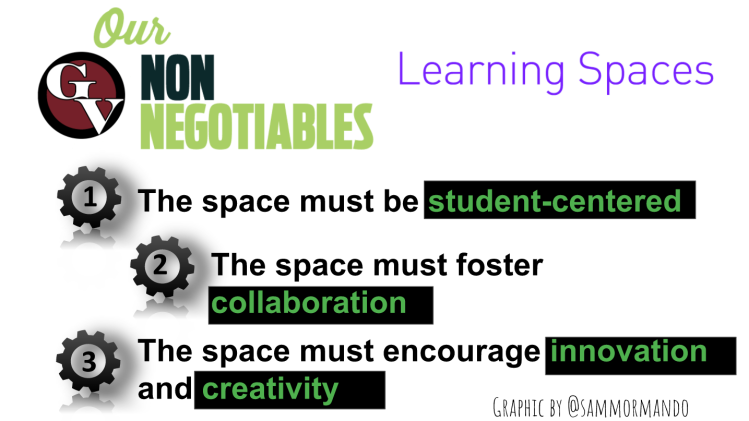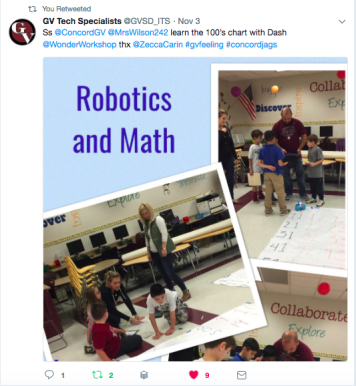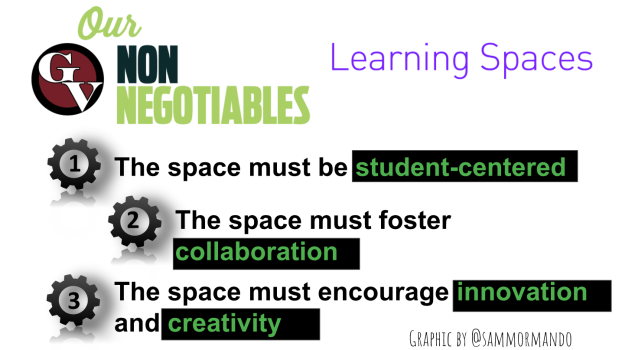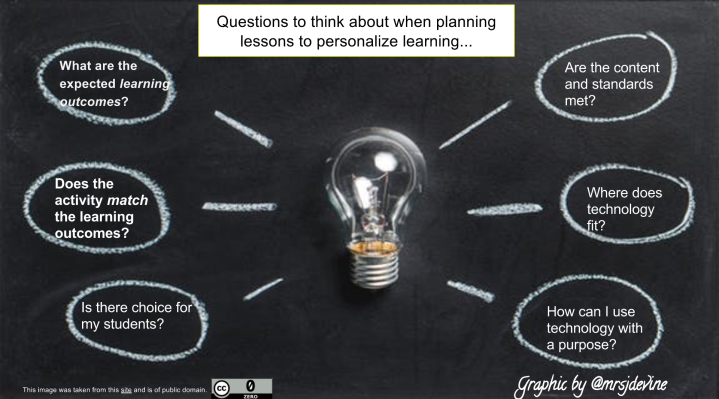
I couldn’t be happier to have Anthony Gabriele as a guest writer on my blog this week. Enjoy!
Anthony Gabriele is currently the Supervisor of Learning, Development & Professional Growth for the Garnet Valley School District, as well as Senior adjunct faculty with the University of Pennsylvania’s Penn Literacy Network. Throughout his career, Anthony has worked as a 7-12 English Language Arts teacher and a K-12 instructional staff developer, with a specific focus on integrating literacy, technology and curriculum. Anthony also worked with the Pennsylvania Department of Education to build PA Core aligned Instructional Frameworks and Assessments and, in partnership with Apple, iTunes University Open Education courses to support educators in their work with the PA Core standards. Currently, Anthony is the district lead on working with the U.S. Department of Education on the #GoOpen movement. Most recently, Anthony was awarded Learning Forward PA’sBest Practices in the Area of Professional Learning in the State of PA Award Winner. He also writes (occasionally) on his blog www.anthonyjgabriele.com.
Authentic Use of a MakerSpace

“If we teach today’s students as we taught yesterday’s, we rob them of tomorrow.” ― John Dewey
In their book Hacking Project Based Learning: 10 Easy Steps to PBL and Inquiry in the Classroom, Erin Murphy and Ross Cooper identify their first ‘Hack’ to be “Develop a Space that Promotes Risk Taking”. In this chapter, they not only discuss remaking the physical environment to “make your classroom look less like school”, but to strive to “foster learner agency through your physical environment”. The next 9 ‘Hacks’ then focus on really the heart of what these spaces are built for – teaching and learning through collaboration, inquiry, metacognition, and the like.
Here at Garnet Valley, when we first began re-designing our learning spaces, as part of our push towards becoming a #FutureReady School District, we made sure to keep in mind that form had to match function (see When Form Matches Function… & Final Form: A Future Ready Library for specifics on the process and different components of redesigning of our district learning spaces). After many visits, research and reading, when thinking about a vision and goals for the spaces, we ultimately decided that the focus of all our redesigns was tied to three main non-negotiables:

To avoid these spaces becoming nothing more than, as Tom Murray would say, ‘Pinterest worthy’, we also allocated (and continue to allocate) time, energy and resources into professional learning related to the types of activities and lessons that would best suit the space. We have four Instructional Technology Coaches in the district who work K-12. One of their areas of focus is working with teachers to co-plan, teach/model, and/or co-teach in these spaces.
In order to provide authentic and purposeful experiences that include technology, design thinking, making, inquiry etc… the coaches and teachers collaborate together to take the already existing curriculum and standards and design lessons and projects that provide students with innovative opportunities that amplify the learning experiences for their students. This is done by co-planning, modeling, co-teaching, supporting risk-taking on both the role of the teacher and the coach. Our collection of Genius Hour Projects Across the K-12 Landscape is a good example of the types of work happening because of this collaboration.
Through our early work with the University of Pennsylvania’s Penn Literacy Network on student centered engagement and lesson design, to our purposeful and student focused curriculum design work around Wiggins and McTighe’s Understanding by Design 2.0, to our more recent #GoOpen and Open Education Resources (OER) work focused on student centered resource design, as well as our beginning work with the Global Online Academy on student focused Course Design for Blended and Online Learning, we are constantly learning, growing and evolving our lessons and units to find ways to best meet our students where they are, push, then support them.

Linked below are samples of lessons, units, and experiences in our Collaboration and Innovation Labs that our coaches and teachers have been working on over the past few years. Some of the links are to blog posts, Facebook posts, videos, and lesson that reflect the purposeful and authentic innovation that we are working to achieve in Garnet Valley.
Making, Robotics, Coding and Programming, Project Based Learning, Inquiry Lessons & i-Search/Genius Hour Projects
In the K-5 Classroom
- Kindergarten, The Letter P, The Three Little Pigs & S.T.E.A.M. (Kindergarten)
- What does DASH need to Survive? (Grade 1)
- Why Do Clouds Rain? – Lesson Plan & Slide Deck (Grade 1)
- Philadelphia Zoo UNLESS Contest & Video Newscast (Grade 2)
- Fairy Tales & Story Elements (Grade 2)
- Pennsylvania Regions Project – From Minecraft & the PA Project to the Minefaire Conference (Grade 4)
- Hydroponics Investigation (Grades 3 & 5)
In the 6-12 Classroom
- The Creative Problem Solving Academy – Google Edu Feature & GV Interactive Video (Grade 6)
- Natural Disasters Green Screen Productions (Grade 6)
- Plate Tectonics – Stop Motion Video 1 & Video 2 (Grade 6)
- A Journey to Jamestown (Grade 7)
- Mr. Saboja’s Geometry Project – Coding with Sphero – Sample Video 1 & Sample Video 2 (Grade 8)
- The Roaring 20s Project & Videos (Grade 11)
- World War II Breakout (Grade 11)
For more on innovation in Garnet Valley, please visit:
- Instructional Technology Coaches blog: http://techcoaches.blogspot.com/ & Website: http://gvtechcoaches.weebly.com/
- ITC Julie Devine’s blog: http://jdevineonline.com/
- Director of Technology, Innovation & Online Learning Sam Mormando’s blog: https://www.sammormando.com/
- Garnet Valley School District on Twitter & Facebook
Enjoy this post? Please visit (and subscribe!) to http://anthonyjgabriele.com/ for more Reflections on Learning.
As always, thanks for reading!